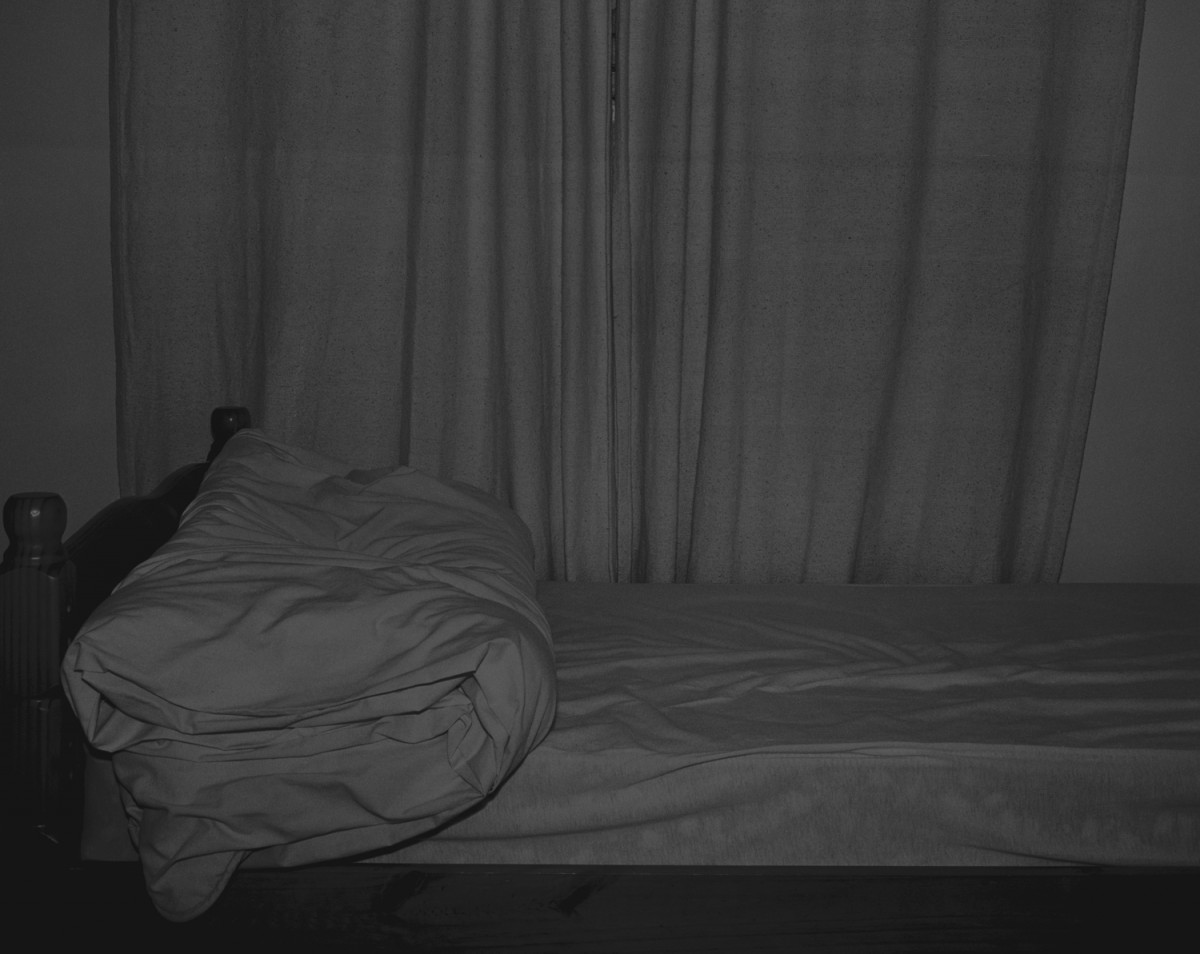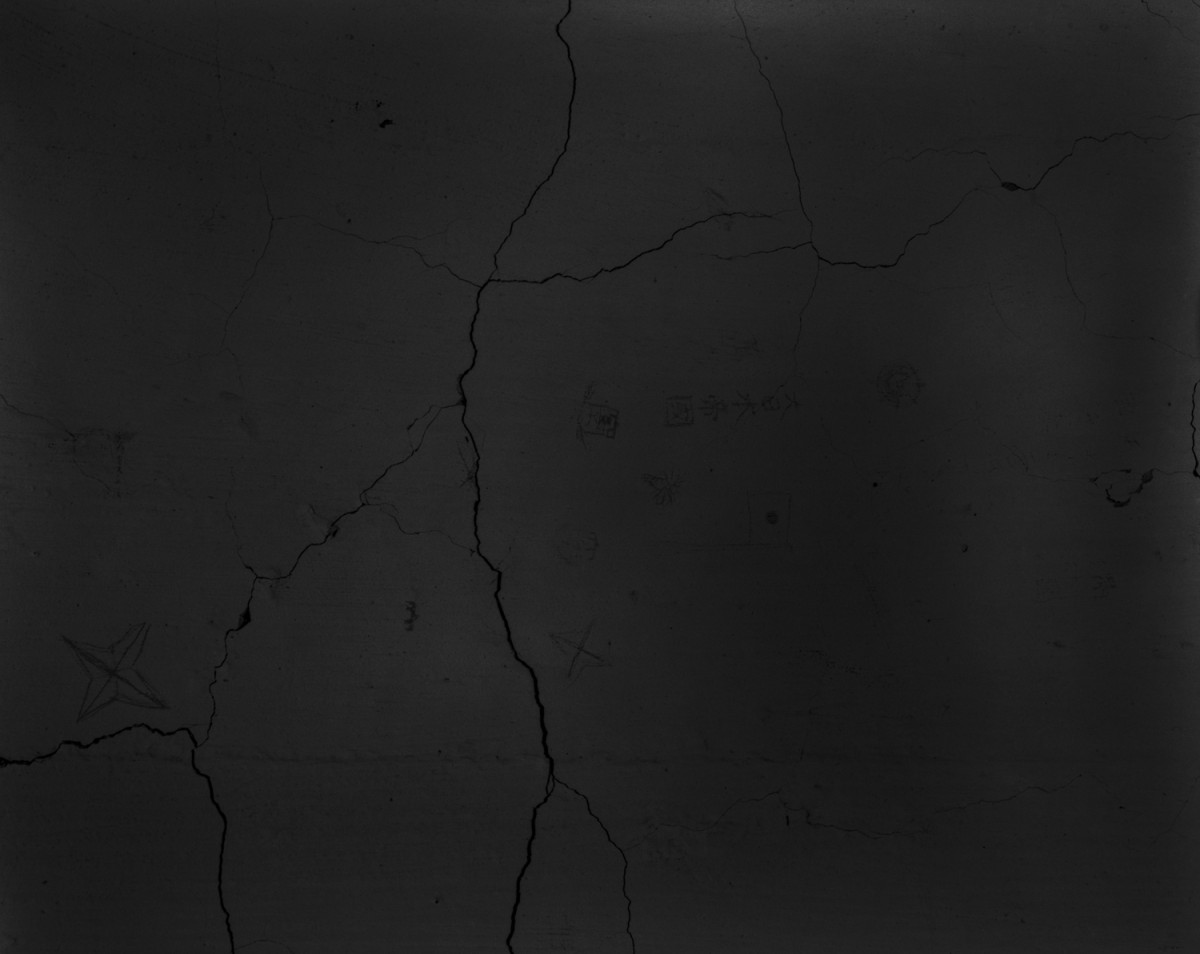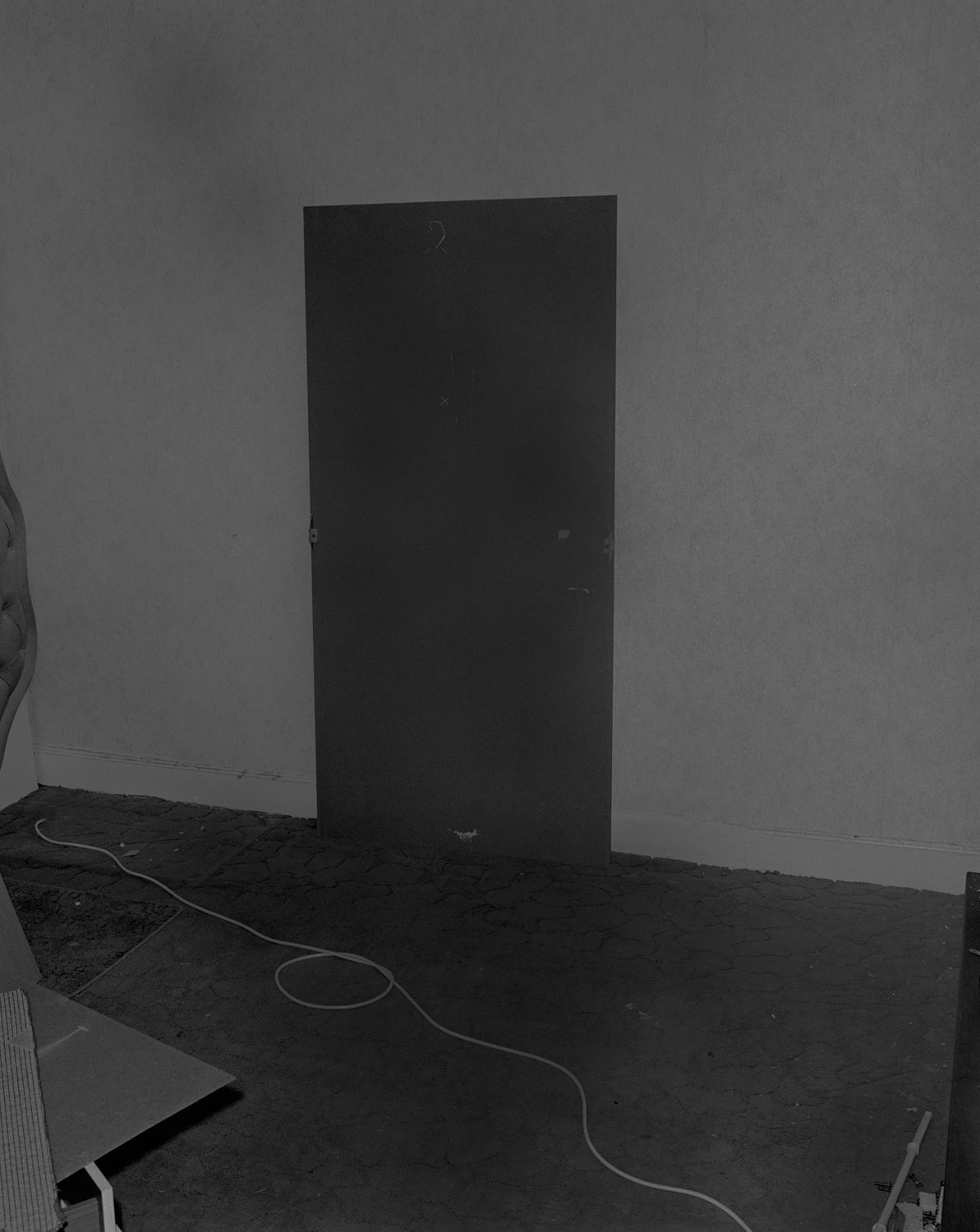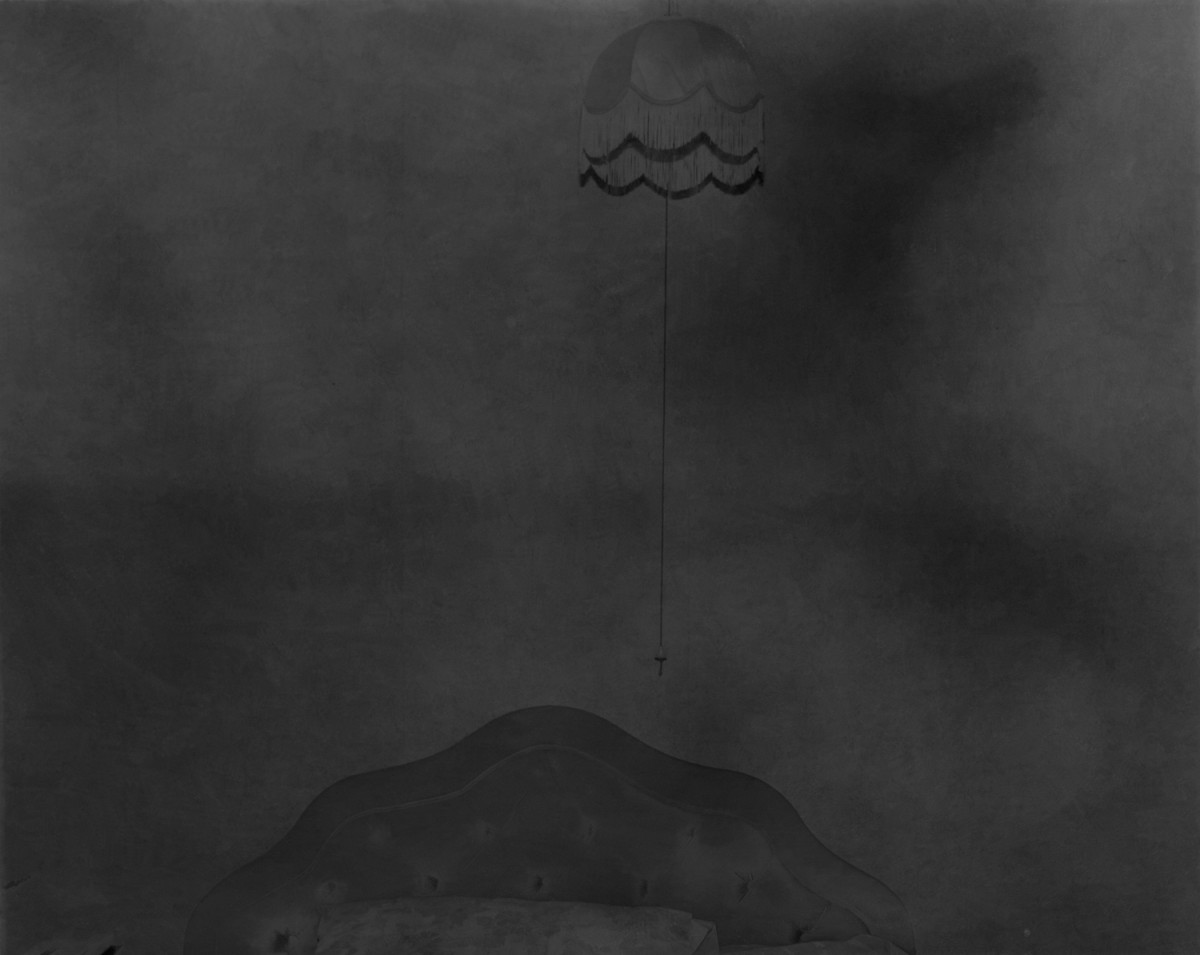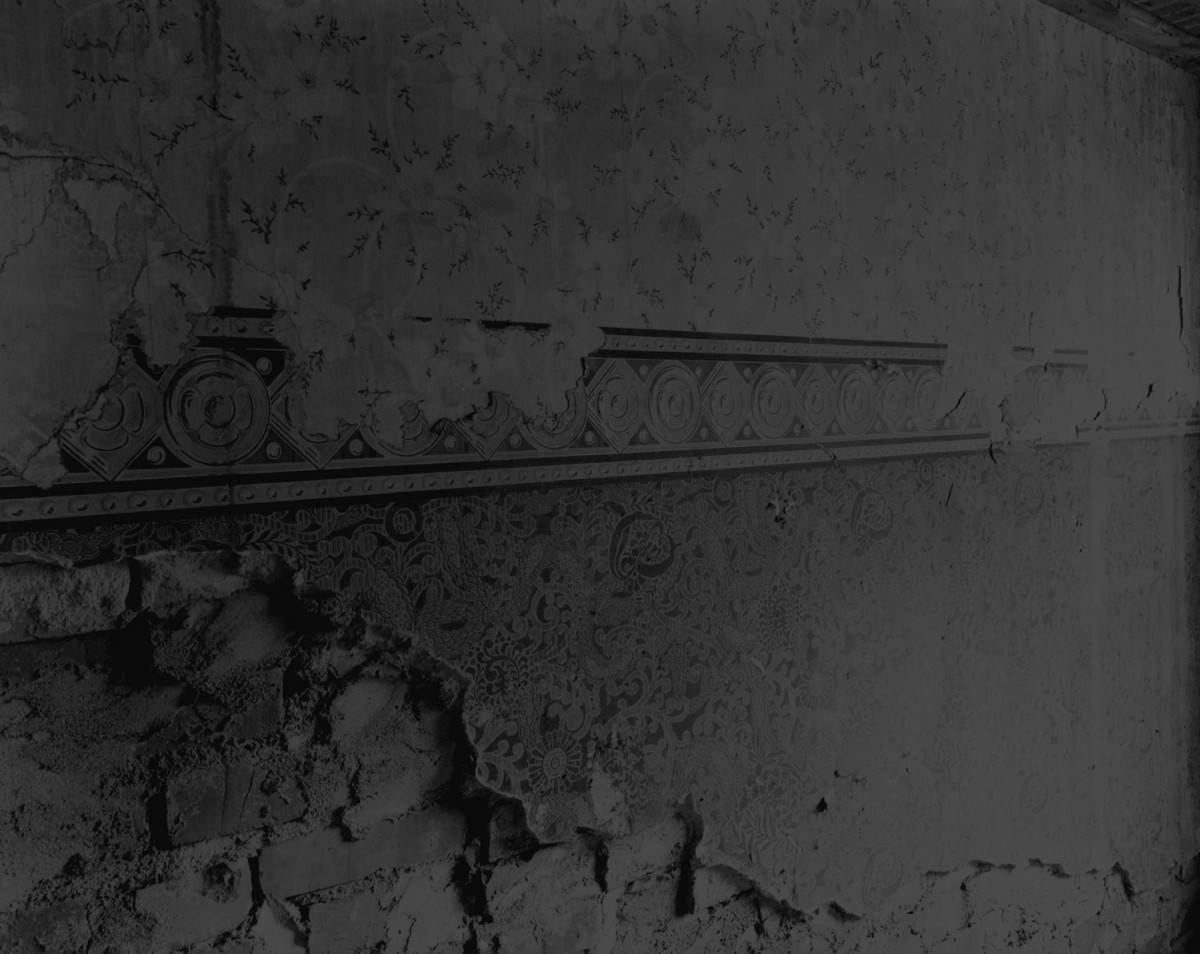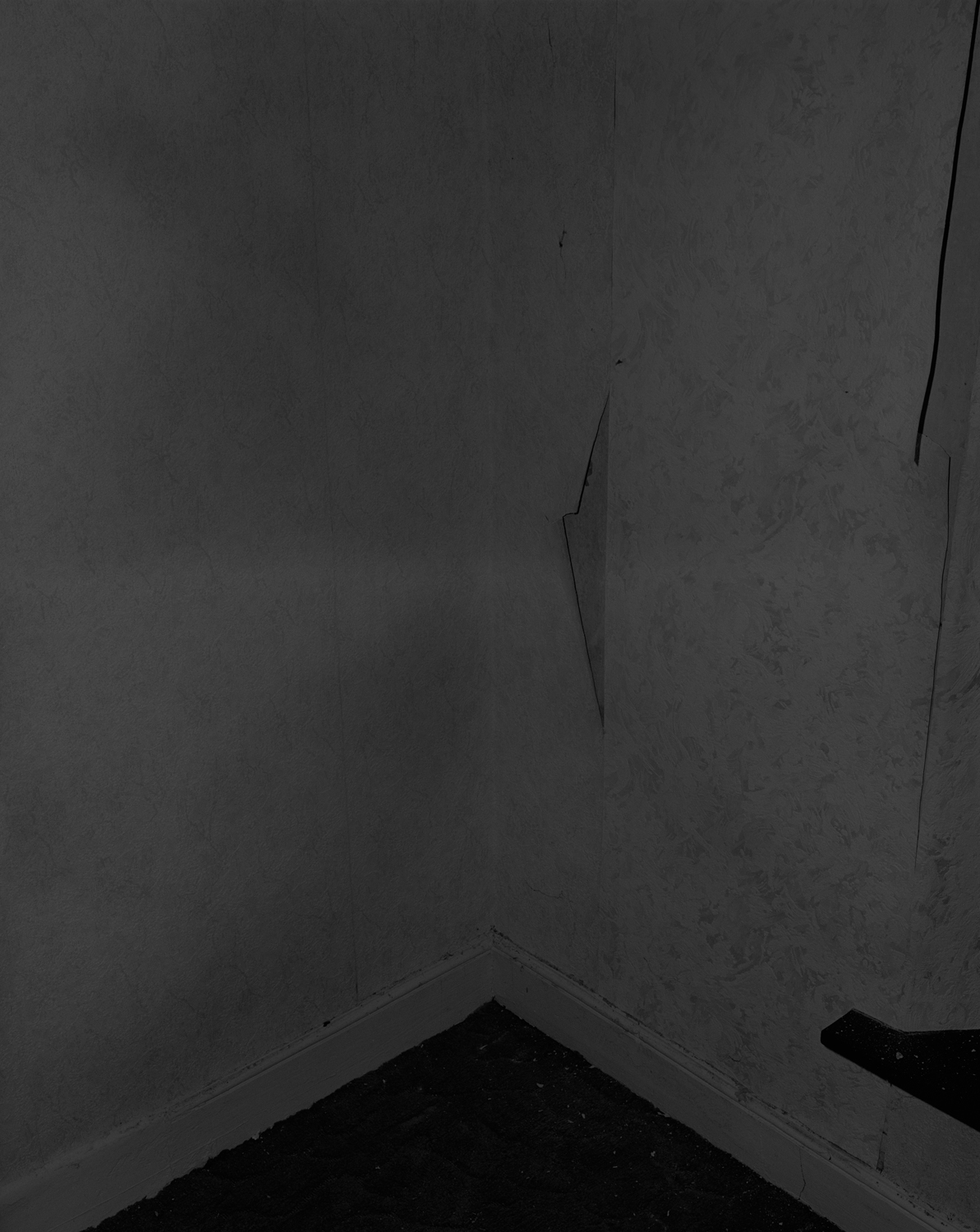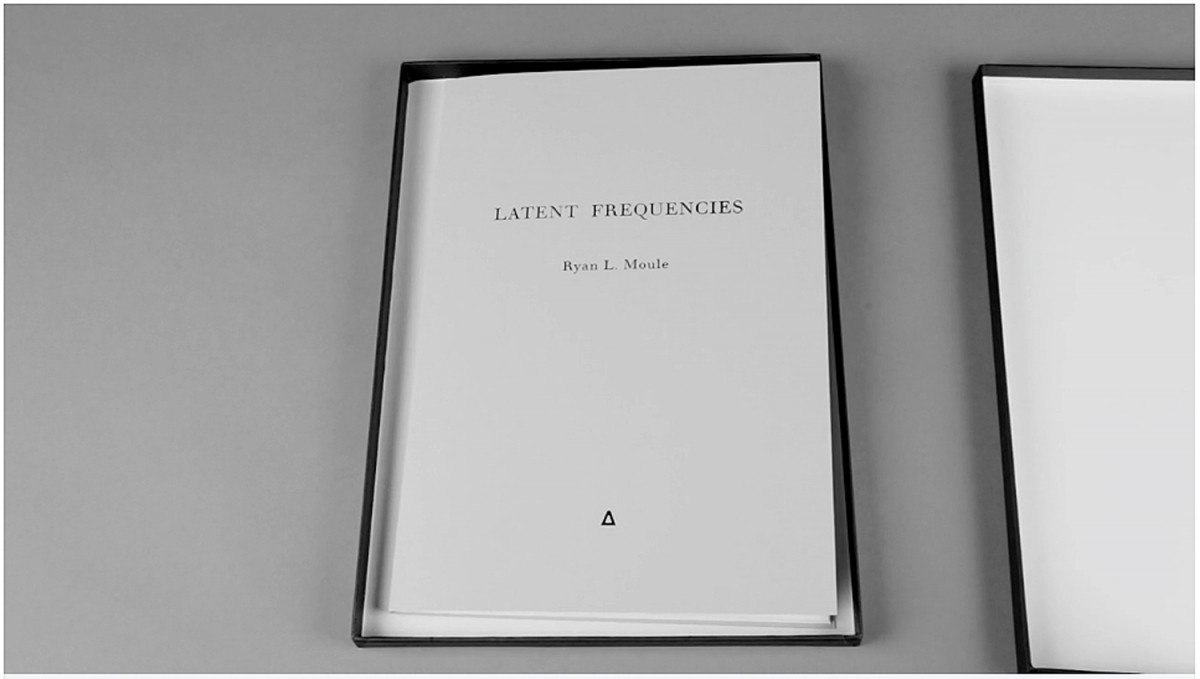"Ryan L. Moule's work often takes on an ephemeral state and predominantly concern the temporalities produced by photographic technologies. By skipping the final stages of the chemical photographic process, Ryan's works often escape the supposed permanence and coherence of the photograph-as-document. This temporally inflected model of representation proposes to predicate its specificity on the medium itself.
Extracts from ‘The Perfect Distance‘, Ryan L. Moule’s Latent Frequencies by Richard Page.
The prehistoric ocean is a space of disappearance and forgetting. The buildings, abandoned to erosion, are familiar structures that now uncannily stand as monuments to the very fragility of permanence. These blind houses, with their boarded up doors and windowless facades, stare blankly out of the photographs Ryan L. Moule presents here. Darkness and obscurity has taken the place of the clarity and logic of the home, reflecting the irrationality of the encroaching sea.
Moule presents ‘unfixed’ prints – a relic of chemical photography. The latent image continues to fade as it is exposed to light over the duration of its existence, thus it is the very act of looking that effaces the image, leaving no trace. As light (standing for both vision and reason), erases the image, it thus dematerializes the photographic object too, posing the impossibility of immortalization. Whereas vision/light once stood for reason and knowledge, here the gaze itself becomes the source of destruction, cannibalising the image.
The clarity of vision, usually associated with photography, has traditionally been a means of controlling and ordering the world, by instigating a pleasurable, albeit imaginary, mastery over the scene. The world is thus constructed as object/commodity for the possession of the viewer. However, the deterioration of the images presented here becomes a deterioration of the viewers’ own making as they identify their own (pleasurable) gaze with the light that destroys the desired object. Pleasure and desire are thus opposing forces. The more one looks at the image, the more one devours it. The closer one gets to the image, the more it slips from one’s grip. The cruel twist for those who long to possess the very materiality of these images (their commodity status) is they must remain locked away, out of sight/light. It is as such, that Moule’s images resist being anchored to visual imperatives, they have the potential to be simultaneously present and absent.
Is it the failure of a falling body not to resist the gravitational pull of the Earth? These crumbling buildings testify to the pointlessness of holding desperately onto the materiality of the world. In the rooms of these buildings, any semblance of corporeal existence has been left behind; their fragile husks wavering in a dialogue with a sublime nature of epic proportions. As the familiarity and certainties of solid land are washed away, perhaps it is here at this moment of defeat that the insignificancies of the world begin to emerge. Such a parallax shift occurs at a kind of event horizon; a point-of-no-return limbo at which time slows down towards an infinite period. Moule’s haunting images seem to linger forever, and out of the grounds of their disappearance, something new emerges. Such an impossibly perfect distance is, of course, the space of fantasy; one occupies both a position of rational distance and over-proximity to an annihilating Other. It is at this threshold, as Bachelard claims, “we hover between awareness of being and loss of being… and the entire reality of memory becomes spectral”. Gaston Bachelard, The Poetics of Space. Boston, Beacon Press, 1994, p. 58.
Ryan is currently working towards a solo exhibition that takes the restored, deleted content of an anonymous external hard drive as its starting point.
More of Ryan’s work can be found here.

